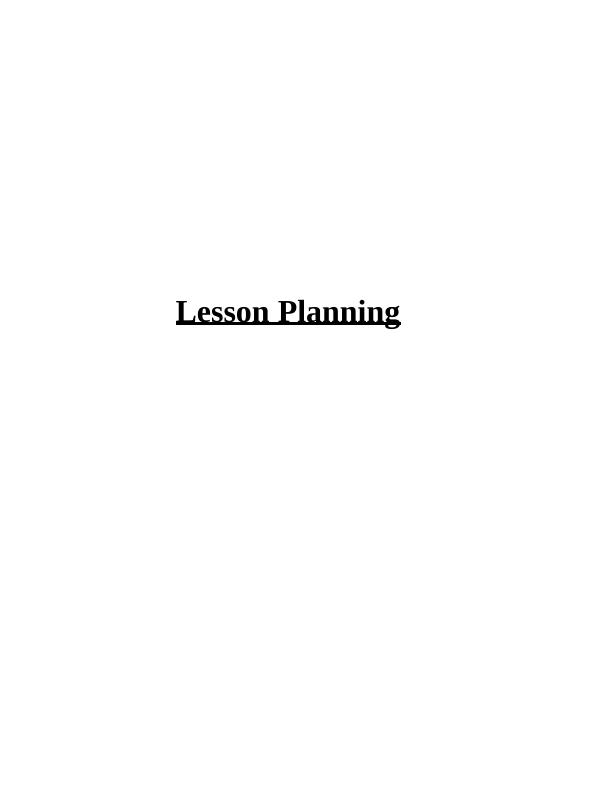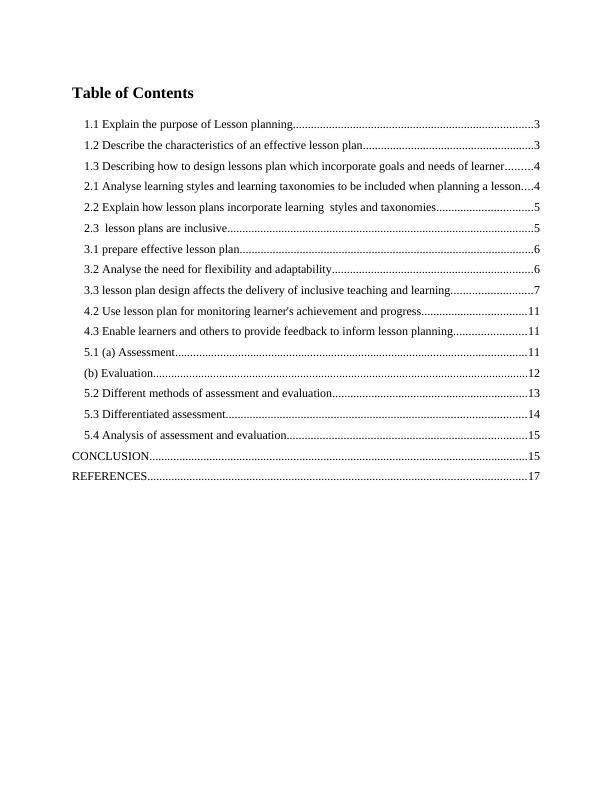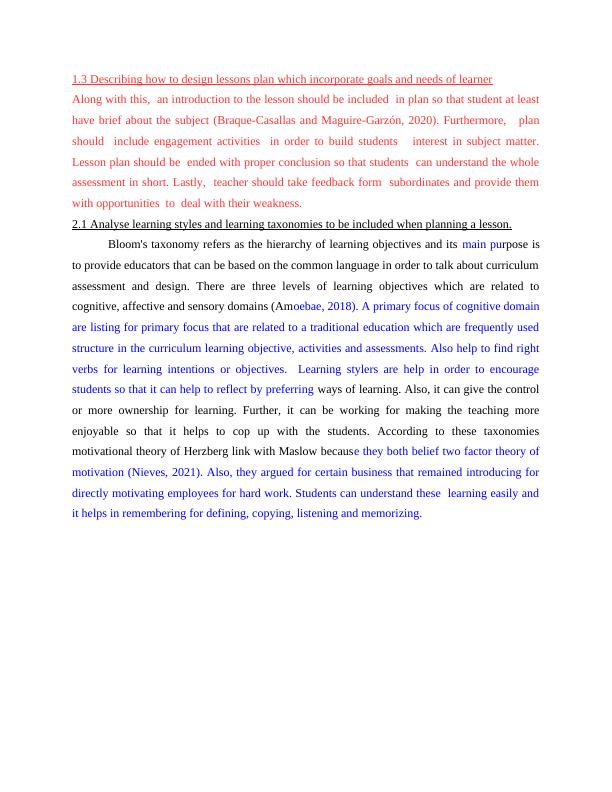Lesson Planning: Purpose, Characteristics, Design, Learning Styles, Inclusivity, and Assessment
18 Pages5411 Words323 Views
Added on 2023-06-14
About This Document
This article discusses the purpose and characteristics of lesson planning, including how to design lessons that incorporate the goals and needs of learners. It also analyzes learning styles and taxonomies to be included when planning a lesson, and explains how lesson plans can be made inclusive. Additionally, it covers the need for flexibility and adaptability in lesson planning, and how lesson plan design affects the delivery of inclusive teaching and learning. The article concludes with a sample lesson plan that meets the individual needs of learners.
Lesson Planning: Purpose, Characteristics, Design, Learning Styles, Inclusivity, and Assessment
Added on 2023-06-14
ShareRelated Documents
End of preview
Want to access all the pages? Upload your documents or become a member.
Lesson Planning: Characteristics, Design, Inclusivity, and Feedback
|15
|4456
|461
Lesson Planning for Algebra Course - Features, Learning Styles, and Inclusivity
|20
|5316
|463
Lesson Planning: Characteristics, Learning Styles, and Assessment Methods
|21
|5437
|250
Importance and Ways of Lesson Planning for Inclusive Teaching and Learning
|18
|5570
|61
Lesson Planning: Designing Effective Lesson Plans for Inclusive Teaching and Learning
|17
|5358
|163
Lesson Planning: Purpose, Features, Designing, Learning Styles, and Inclusive Learning
|18
|5648
|215




